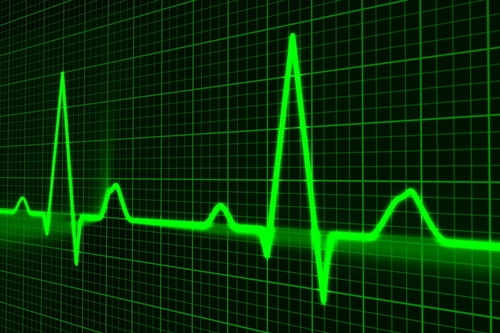17 February 2016. A review of records of people wearing a single-use heart monitor patch found serious heart rhythm problems occurring well after the 48-hour period recommended for Holter monitors, the device used most often for ambulatory heart monitoring. Results of the study, conducted by researchers at Kaiser Permanente of Northern California, but sponsored by iRhythm Technologies of San Francisco, appear in today’s (17 February) issue of the journal BioMed Central Cardiovascular Disorders.
The study team led by Matthew Solomon, a cardiologist at Kaiser Permanente, reviewed data collected from nearly 123,000 iRhythm Zio heart monitors worn by individuals from 2011 to 2013. The Zio system has a monitor chip, secured with water-resistant adhesive to the chest of the patient, which is worn for up to 14 days. The patch collects heart rhythm data and detects irregular rhythms, such as rapid heart beats known as ventricular tachycardia and abnormally slow heart rhythms called bradyarrhythmias, as well as atrial fibrillation pauses longer than 5 seconds and blockages of the cardiac conduction system.
After being worn by an individual, the Zio patch is sent back to iRhythm, where technicians analyze the data and highlight potential problems for the person’s doctor to review. Both the patch and the analytical system received FDA clearance in 2009. A prescription is required for an individual to use the system. The company says the Zio system was used so far by more than 400,000 people.
The ambulatory heart monitoring technology used most often today is the Holter monitor. A Holter heart monitor collects heart rhythm data through several electrodes attached to the chest and wired to a battery-powered recording device about the size of a smartphone. The Holter monitor continuously records heart beats for 24 to 48 hours, and is then returned to a technician for data download and analysis.
Solomon and colleagues reviewed 122,815 patch records worn by 122,454 individuals who wore Zio systems for an average 9.6 days, with a quarter of the monitors worn for nearly 14 days. The results show nearly 1 in 5 records (18%) indicated nonsustained ventricular tachycardia, rapid heart rates of less than 30 seconds, considered an indicator of potential underlying structural heart problems.
The findings also show nearly about one-third (34%) of all ventricular tachycardia incidents recorded by Zio devices occurred later than the 48 hour maximum time that the traditional Holter monitor is worn, with nearly a half (47%) of the incidents occurring after the usual 24-hour period for most Holter monitor wearers.
For bradyarrhythmia incidents, about a third (32%) were detected by Zio devices in the first 24 hours of wear, while nearly half (47%) of the total were found in the first 48 hours. It took 3 days of wear for the Zio to detect more than 8 in 10 (83%) of the bradyarrhythmia incidents. In addition, say the researchers, records after 7 days yielded substantial numbers of heart rhythm problems, some considered of high risk to the individuals wearing the device.
iRhythm now offers desktop and iPhone MyZio apps for people using the service to log symptoms they encounter while wearing the Zio patch. The patch does not communicate with the app, but it enables wearers to keep track of symptoms in an automated format rather than keeping a separate logbook.
Read more:
- Workplace Heart Health Platform in Development
- Smartphone Add-On Found Comparable to Pro Stethoscopes
- Heart-Powered Leadless Pacemaker in Development
- Manufacturing Process Devised for Skin-Patch Electronics
- In-Heart Pacemaker Benefits Shown in Clinical Trial
* * *


 RSS - Posts
RSS - Posts
You must be logged in to post a comment.